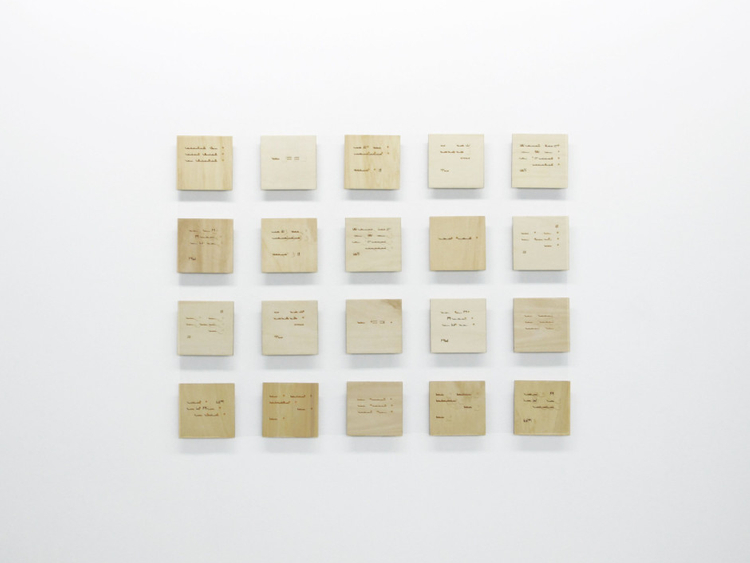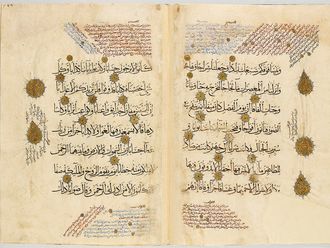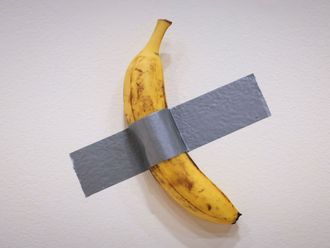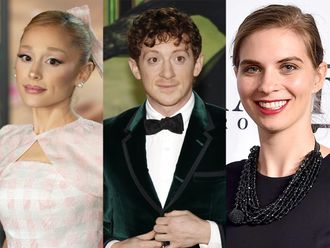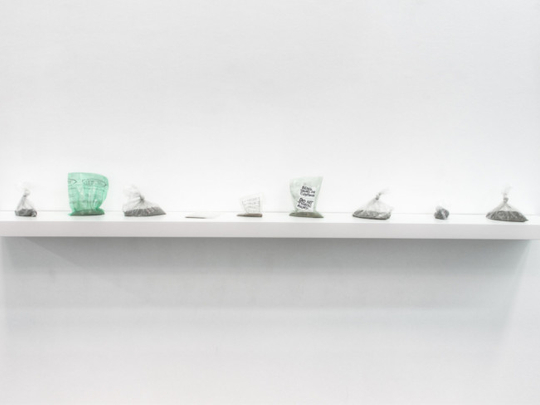
The latest exhibition at Carbon 12, “Visceral Silence”, brings together two bodies of works by artists whose art practices are quite different. Austrian Monika Grabuschnigg has created a series of ceramic sculptures for this show that are inspired by Afghan “war rugs”; and Lebanese artist Christine Kettaneh is showcasing three installations based on keys. While Grabuschnigg has used the mute language of form, colour and texture to speak about political turmoil and consumerism, Kettaneh has created her own unique silent language to express what is missing in our lives and in our society, and the yearning to be whole again.
Kettaneh was born in Lebanon in 1982, and is based in Beirut. She studied Fine Art and Economics in Beirut, and has a Masters in Fine Art from Central Saint Martin’s College of Art and Design, London, as well as a masters in Finance and Economics from the London School of Economics. The idea for these works was triggered when her house key was accidently damaged, locking her out of her home in London, and necessitating a visit to a key maker. Her installations revolve around keys as a symbol of ownership and possession, as well as the anxiety of exclusion and separation, and reflect her fascination with the art and science of key cutting.
“The key system reinforces the separation between yours and mine and represents power and possession. It reminds me that human beings are predisposed to being together as a community, but the systems that we have put in place are doing just the opposite. I am more interested in the bits of a key that are lost when a key is cut than the key itself. It is as if the key yearns for its missing bits and there is a unique melody in each key that we cannot hear. But the negative spaces left by the absent bits get activated when the pins inside a lock align with them exactly and the key can turn. I wanted to retrace the bits that the key is missing and make it whole again. So, this body of work is about being aware of what is missing, and about questioning the meaning of presence through absence,” Kettaneh says.
At first glance, her series “Mute Melodies” appears to be a set of texts laser-engraved on plywood. But the hieroglyph-like letters and words are unreadable, and a closer look reveals that the engravings are actually tracings of the contours of keys, outlining the pieces that go missing when the key is cut.
“For this work, I requested my friends to lend me their sets of keys, and traced out the path that each of them would take from the outside to the inside, starting from the contours of their bicycle key followed by tracings of the keys to various gates and doors they had to unlock to enter their room. Each engraving I have created is like a mute musical composition dedicated to the owner of the keys,” Kettaneh says.
Unlike the glossy panels of “Mute Melodies”, her second installation is simply a shelf bearing several bags filled with metal filings. “I collected these filings from key cutters across London over six months, and they represent another materialisation of the negative space of the key. Because we are always so obsessive about our keys, I decided to call this work featuring the missing bits that we never think about ‘Bags of Unobsessiveness’,” the artist says.
Her third installation, “Time Cutting Time”, is another laser-cut text-like piece on the wall, accompanied by a book with a text featuring her random thoughts and feelings about key cutting and key cutters. The artist is inviting visitors to cut out a page from this book, engaging them in the very act of cutting that is evoked through the other works.
Berlin-based Grabuschnigg was born in Austria in 1987. She studied at the Bezalel Academy of Arts and Design, Jerusalem, before getting her masters in Fine Art from the Academy of Fine Arts in Vienna. The “Relics Collection” she has created for this show is inspired by the imagery of warfare woven by Afghan weavers in their rugs during the Soviet occupation of Afghanistan in the 1980s.
“I am interested in outsider art, observing how symbols are changing and how our consumerist society is adapting to these changes. I was fascinated by the fact that to reflect the political turmoil happening in their country, Afghan weavers began incorporating imagery of grenades, tanks, missiles, warplanes and guns into their traditional floral and geometric patterns. But it was even more interesting to see that after two decades these pieces have now become a commercial commodity in the art market and are collected by international collectors and museums; and that these ‘war rugs’ are still being produced today to be sold to tourists. When I see them in a European museum today, I feel it is basically a gaze of cultural voyeurism. So, there is this gap in what they were originally referring to, and what they mean today. I wanted to comment on this transformation by translating the content of these rugs into three-dimensional objects,” Grabuschnigg says.
She has combined the war imagery from the rugs with contemporary everyday consumer objects such as lamps and glasses, and decorated them with candy-coloured glazes, carvings, textures and golden ornamentation to create her strange but pretty sculptures. The artworks are attractive, but with an underlying sense of violence that is reinforced by titles such as “The Golden Marauder”, “Bird Catcher” and “Camouflage”. The fleshy hues and sinister shapes of these sculptures speak in a visceral, silent language about our fetish-driven consumer society, cultural voyeurism and the link between artwork and consumer commodity.
Jyoti Kalsi is an arts-enthusiast based in Dubai.
“Visceral Silence” will run at Carbon 12 gallery, Al Quoz, until November 7.



